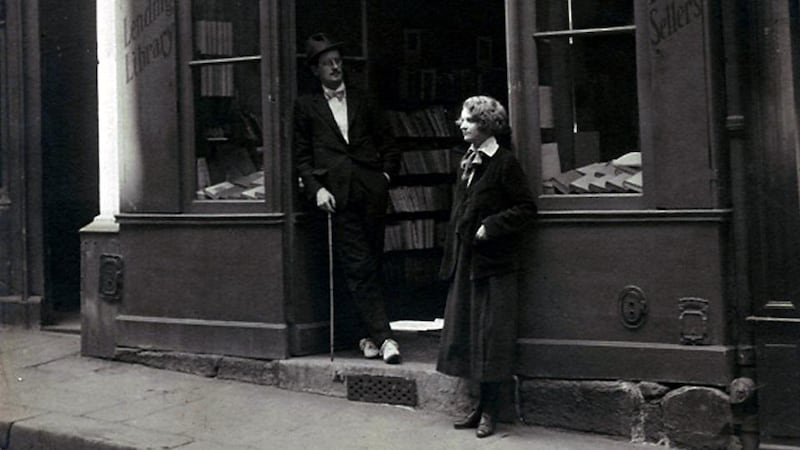It has become a commonplace to say of Irish writers that they have put Ireland on the map but has anyone ever attempted actually to map where they have set their fictions worldwide?
I set out to discover if there was at least one Irish novel, short story, play or, at a pinch, poem set in every country and to discover if there were hot spots as well as blind spots, countries or even cities where Irish fiction tended to cluster. Presented here is a representative sample, perhaps skewed somewhat to show the widest possible spread.
I also wanted to explore why writers set their works abroad, the challenges and opportunities this created and what this might mean for the Irish literary tradition. Was living or having lived abroad a factor? Were the stories of the diaspora a significant concern? Is the Irish literary tradition more international than most?

It was no great surprise to find Britain, our nearest neighbour, and the United States, two key destinations for Irish emigrants, figuring prominently, but it is striking how few Irish novels are set in Australia (only two that I could find) and none at all in New Zealand.
Tim Fanning’s recent book, Paisanos: The Forgotten Irish Who Changed the Face of Latin America, revealed a host of fascinating stories about that continent but apart from Anne Enright’s The Pleasure of Eliza Lynch, they have yet to catch the imagination of Irish writers. Roger Casement’s humanitarian heroics in Peru inspired Mario Vargas Llosa instead to write the novel The Dream of the Celt. By contrast, it is remarkable how much Irish fiction is set in Spain – by Colm Tóibín, Edna O’Brien, Kate O’Brien, Aidan Higgins, Maura Laverty and Nuala O’Connor, to name but some.
For an emigrant writer like Brian Moore, the setting of some novels follow his own peregrinations, from Montreal to New York to California, but the location of others is dictated by his subject matter. JM O’Neill earned the nickname “the laureate of the London Irish” for his gritty depictions of labourers and publicans in Duffy is Dead and Open Cut. The decline of the American dream in the US rustbelt is more off the beaten track for an Irish author, but Limerick’s Michael Collins moved to Notre Dame in Indiana on an athletics scholarship, still lives in the area and has had serial success fictionalising a malaise whose repercussions have become all too real.
By contrast, Ronan Bennett lives in London but his political engagement has led him to set his novels in the Congo (The Catastrophist), Guatemala (Overthrown by Strangers), England (The Second Prison; Havoc in its Third Year); and revolution-era Russia (Zugzwang).
Family ties have in part inspired Eilis Ni Dhuibhne to set work in Scandanavia, Hugo Hamilton in Germany and Mary Costello in New York.
Of course, fiction cannot be pinned down to one spot. What could be more Irish a setting than the boreen green in the Burren where Anne Enright’s The Green Road winds up? But it is also a novel about the gay scene in New York during the Aids crisis and an aid worker in Mali.
“I often send my characters abroad, where they can be seen more clearly,” says Enright. “The Irish went to unexpected places. There was an engineer who shored up the hills of Hong Kong as they fell into the sea – they called him Slopes Malone. I would love to write about Slopes Malone. I would love to write about the Maharaja’s nanny, they liked to call ‘Icky’. I would love to write about Mike Meegan, a ‘charity worker’ who went to Kenya and pretended to be a priest. The Boston Irish are too much of a community for me (heck, I can get that at home). I like my characters out there, on their own, because the world is wider than you think, and more various.”
For David Park, the Dutch setting of The Light of Amsterdam represented an artistic challenge. “After completing The Truth Commissioner I knew I wanted to write outside expectations of geographical setting and subject matter. I wanted also to look outward as a way of escaping a sense of artistic claustrophobia.”
For Colm Tóibín, there is a direct connection between inhabiting a place and setting work there. He lived in Barcelona and spent time in the Catalan Pyrenees between 1975 and 1978 and set his first novel The South (1990) there. He spent 1985 in Buenos Aires covering the trials of the generals, then set his novel Story of the Night (1996) in the city.
“Having grown up in England with parents from different communities in Northern Ireland, I’ve always had a confused relationship with Irishness,” says Wild Quiet author Roisin O’Donnell. “Perhaps my background is the reason I often set my stories abroad, writing about people in the margins of society, and those who are struggling to reconcile dual identities. I’ve lived abroad in several countries, and much of my inspiration has come from these experiences.”
One very Irish reason for migration, the abortion trail to England, is the subject of Martina Evans’ s The Glass Mountain, Paula McGrath’s A Difficult History and Ni Dhuibhne’s Aisling.
“Traditionally, the Irish writer went abroad but did not set books abroad, probably at least in part because of cultural inferiority,” argues writer Michael Foley. “It took brash Americans to write The Sun Also Rises and Tropic of Cancer. However, the growth of national self-confidence has encouraged Irish writers to look further afield. John Banville has probably been a key influence by inverting the usual process and living in Ireland but setting novels abroad, and even having the nerve to create an English upper-class main character in The Untouchable.”
Fintan O’Toole sums up: “It is James Joyce’s Leopold Bloom who defines a nation as the same people living in the same place or in different places. Irish writers have always agreed. There is, in Irish literature, an intense sense of place and an equally intense sense of displacement. Thus Joyce mapped Dublin with a minute and unmatched intensity but his alter ego Stephen Dedalus chose exile as one of his three weapons. In the literary imagination, Ireland is a place with 33 counties the 32 on the island plus the most resonant of them all, Elsewhere. Getting out, yearning for home after one has escaped from it, inventing oneself anew in other cities, making other Irelands of foreign places and a foreign place of Ireland these are, for writers in a culture that was globalised before the word itself existed, the tools of the trade.”


















